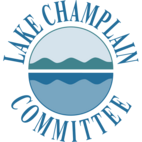Water News from Near and Far
Clean, Drain, Dry – It’s More Than a Suggestion
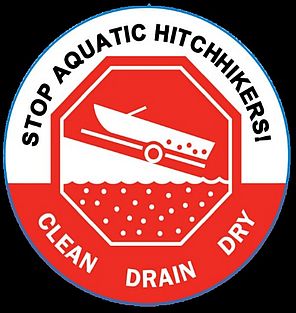
New York has taken a step forward in the fight against invasive species. New regulations went into effect at the end of May with regard to boat launches throughout the state. Now, all watercraft operators must take reasonable precautions before launching. These include removing visible plant or animal matter, washing, draining, and drying watercraft. First time violators can receive a written warning; second offenses will cost $150; if a fourth offense is incurred, fines can be up to $1,000.
Oil Spill Trainings
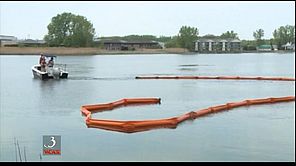
An oil spill response training was held in Plattsburgh over three days in late May. Agencies involved included EPA, the Coast Guard, and the NY Department of Environmental Conservation. Agency staff practiced deploying booms to control any spills. Rail tracks run immediately adjacent to Lake Champlain in New York and have been host to a frightening increase in oil tank car traffic. LCC raised the alarm about oil transport by rail along the lake and is part of a coalition of environmental advocates calling for a ban on oil train transport.
Antibacterials Accumulate in Food
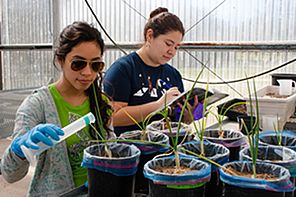
The first study to measure the long-term, repeated effects of triclosan on soil and plant communities has recently been published in the Journal of Environmental Quality. Monica Mendez, an associate professor in the Department of Biology and Chemistry at Texas A&M International University, irrigated onions and tomatoes with water containing triclosan at concentrations found in wastewater. She found that the diversity of soil bacterial communities decreased and the triclosan accumulated in onions compared to controls.
Triclosan is found in household products advertised as antibacterial. The problem is that triclosan kills both beneficial and harmful bacteria, and leads to development of antibiotic resistant germs. A US Geological Survey study has found triclosan in 58% of freshwater streams examined. In the 1990s there were only a few antimicrobial products available for sale. Within a decade, over 700 different products could be purchased. Originally, antimicrobials were used in hospitals and other places where vulnerable populations needed to be protected. However, thanks to aggressive marketing by producers of the chemicals, global sales of antimicrobial personal care products reached $350-400 million per year as of 2008 and sales are increasing at three to seven percent per year. Antimicrobials products include certain liquid hand soaps, deodorant bar soaps, face washes, deodorants, toothpastes and mouthwashes. Some more odd products include cutting boards, mattresses, socks, and even chopsticks.
The Two Most Confounding Words in Water Policy

What exactly is a “significant nexus”? Those two words, from a Supreme Court decision written by Justice Anthony Kennedy in 2006 play a huge role in water policy, as explained in a recent Politico article. Kennedy decided that wetlands must have a “significant nexus” to navigable waters in order to be protected by the federal Clean Water Act. Regulators have been trying to figure out what that means ever since.
The court case, Rapanos vs. United States, involved a developer who filled a wetland in order to build a mall. He was subsequently convicted of two felonies leading to the case. Rapanos argued that the wetlands in question were not protected by federal law because they were not navigable waters.
In the court case, the conservative wing of the court wanted to apply the Clean Water Act only to waters with a “continuous surface water connection”. The more liberal wing argued that all waters should be protected. Justice Kennedy attempted to split the difference with a separate opinion citing the “significant nexus” standard.
To provide clarification about what waters are regulated, the Obama administration drafted a 75-page document in 2015 defining Waters of the United States. The policy proposal created a stir that is still going on. Agricultural interests, exempt from many Clean Water Act provisions, have complained that the definitions are too expansive and have mounted a coordinated media campaign to weaken the proposal. The administration re-worked the proposed rule, weakening it, but critics were not mollified. Ultimately, the courts will need to decide whether the new rule hits the mark in clarifying what constitutes a “significant nexus”.
Chesapeake Warnings
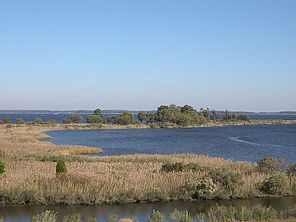
The Chesapeake Bay has been the subject of the most ambitious federal water cleanup plan underway in the country. In 2010 the Obama administration announced a new Chesapeake Bay clean-up plan. So far, more than 125,000 acres of forested buffers have been planted along rivers and streams in Pennsylvania portions of the basin alone. States and municipalities have upgraded wastewater treatment facilities, built stormwater retention ponds, and paid farmers to plant cover crops. Yet questions persist about whether the efforts will have the intended effect of cleaning up the Bay. A recent article in Politico notes, “As this plan lurches forward, it’s a high-stakes experiment into just how possible it is for government to protect our most crucial resource, and whether our modern way of life can ever be compatible with clean water.”
The Chesapeake Bay drains portions of six states. Over 18 million people live in the watershed which stretches from Cooperstown, NY to Norfolk, VA. Like Lake Champlain, the Chesapeake Bay has been plagued by excess nutrient pollution. Pollution led to declines in sea grass beds loss of habitat for the Bay’s iconic (and tasty) blue crabs and oysters.
The Chesapeake clean-up plan has offered a mixed bag of successes. Some ecological parameters within the Bay have improved. For example, underwater grasses are recovering. On the other hand, states are falling far short of reaching their pollution reduction goals, despite the large sums of money expended. Pennsylvania has spent over $4-billion in the last three decades, but is still sending 16 million more pounds of nitrogen to the Bay than it is supposed to under the management plan. The mixed signals brought about in the Chesapeake clean-up have made it difficult to export the model to other watersheds. None of the Presidential candidates have signaled that they would push to extend the efforts.
